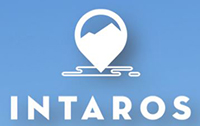This document contains the updated Data Management Plan (DMP) for the INTAROS project. The DMP describes how new datasets collected or generated by partners in the project, are managed according to guidelines for FAIR data management in Horizon 2020. This includes the procedures for planning and conducting data management within the project, i.e., the data governance framework. Data governance in INTAROS is pragmatic and geared towards supporting partners in preparing and publishing their data collections. The planning and monitoring activities are carried out by the Data Management Theme Leader (NERSC) and the leaders of the data generating work-packages in the project (FMI, IOPAN, NORDECO, TDUE, IMR). Partners generating data are responsible for making their collections available in line with the recommendations of the DMP. The Data Management Theme Leader (NERSC) and data centre partners (AWI, CNRS, FMI, IMR, IFREMER, ONC, RADI, RIHMI-WDC) provide support with data publication in open data repositories. Close collaboration between data managers and data providers has been key to implementing sound data management in the project.
INTAROS is pan-Arctic in scope and collects in situ observations, extract parameters from satellite data and model projections in several regions and across multiple spheres (themes). The focus areas of INTAROS include Coastal Greenland, North of Svalbard, Fram Strait, the Eurasian Basin, and (5) selected sites in Siberia, Finland, Canada and Alaska. Within these areas, INTAROS partners are collecting new observations and generating high-level data products from different spheres: (1) Atmosphere, (2) Ocean, (3) Sea ice, (4) Marine ecosystems, (5) Terrestrial, (6) Glaciology, (7) Natural hazards, (8) Community-based monitoring.
Datasets collected or generated within these spheres by the time of writing are summarised in this document, based on the deliverables from WP 2 (“Exploitation of existing observing systems”), datasets collected in WP 3 (“Enhancement of multidisciplinary in situ observing systems”) and WP 4 (“Enhance community-based observing programs for participatory research and capacity-building”), as well as model products and derived datasets from WP6 (“Applications of iAOS towards Stakeholders”). The published datasets have been registered in the INTAROS Data Catalogue, available at https://catalog-intaros.nersc.no/. This data catalogue is updated as new datasets are prepared during the remainder of the INTAROS project.
The DMP recommends standards for metadata and data standards that INTAROS partners should prepare their datasets in, to make it easier for other scientists and stakeholders to reuse the data. Some widely used open-source tools and libraries that can help scientists generate metadata and data in standard formats are described. Use of servers that support the OPeNDAP standard protocol is recommended to facilitate data extraction from distributed sources. INTAROS, together with the Useful Arctic Knowledge (UAK) project has organised several user meetings and one research school to build competence in data management within the INTAROS consortium. Training material from these and other events with INTAROS contribution is made publicly available on the INTAROS web site http://intaros.eu/.
Type of deliverable
Report
Number
D1.8
Lead beneficiary
NERSC
Dissemination level
Public
Due (in months)
54
Deliverable file
Open deliverable
YES
